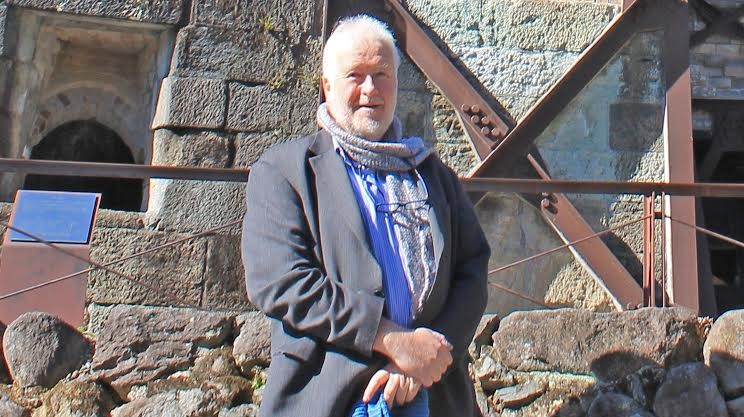… a heritage consultant at JCIS Consultants.
My work focuses on the east coast of Australia. In my practice, I am never sure whether I am a historian, archaeologist or a geographer and often I think I am all at the one time. Certainly, my research interests are not confined to a single discipline.
What made you decide to pursue a career in history?
I was born and grew up in Melbourne. From an early age I was regaled with historical tales from my father, mostly about my family, the Stuarts and their rich history – all of which seem, on reflection, to be untrue! My father and I also visited various goldfields, wineries, timber mills, historic ships and so on across Victoria.
All I wanted to do at school and at university was history. I was rather surprised to find I could only do one unit of history in first year at La Trobe University. In second year, I chose prehistory, which was offered by the history department, largely because I wanted to find out more about Aboriginal history. I ended up becoming an archaeologist and being one of the first three honours students in Prehistory at La Trobe University.
I had no master plan for my career but took every opportunity to do archaeology. I moved into historical archaeology because my first permanent job at the Victorian Archaeological Survey required it. My background in Victoria’s history was a useful entry into the field. I am a strong believer that everyone working on Australia’s heritage should have at least a good working knowledge of Australia’s history.
Who is the audience for your history?
As a consultant, I find it a real battle to turn reports into published research simply because of the lack of time. A collection of papers and reports is available on Academia at https://sydney.academia.edu/IainStuart. I think this is a good way for reports and papers to be made available to everyone.
What’s your favourite historical source, book, website or film?
I love Parish and Crown plans and other types of maps. These are a favourite source of historical information and a way into the government records of land occupancy. My most used website is TROVE.
The Historical Geography of NSW by Denis Jeans is certainly one of the works I most frequently use along with Geoffrey Blainey’s Rush that Never Ended.
Mr Bligh’s Bad Language by Greg Dening is my favourite history. It is well researched, insightful and adds a really critical aspect to the Bligh story by placing him in the context of the web of social relations. Dening was post-modern in his anthropological approach to history and use of Geertz’s ‘thick description’ to understand Bligh’s circumstances. Dening was one of the best historians working in that field.
If you had a time machine, where would you go?
If I had a time machine and I needed to take a break from battling Daleks, I would turn the TARDIS to Nagasaki around 1855 to 1867 when the Shogunate’s authority was breaking down and the feudal clans were jockeying for position. Western and Chinese traders were also looking for opportunity and other Japanese were agitating for modernisation. The centre of all this ferment was Nagasaki. It would have been a very interesting and exciting place at that time.
Why is history important today?
The past is always political; it is bent and transformed to suit partisan views. One of the roles of a historian is to challenge politicised views of history by offering evidence and interpretation that is more balanced and authoritative. In doing this we rely on our skills in research and in critically evaluating sources.
I think my role is to use both documentary and physical evidence and to explain and interpret the evidence to present a nuanced story. Hopefully the reader will be able to understand what happened but also why it might be important in the broader pattern of history.
